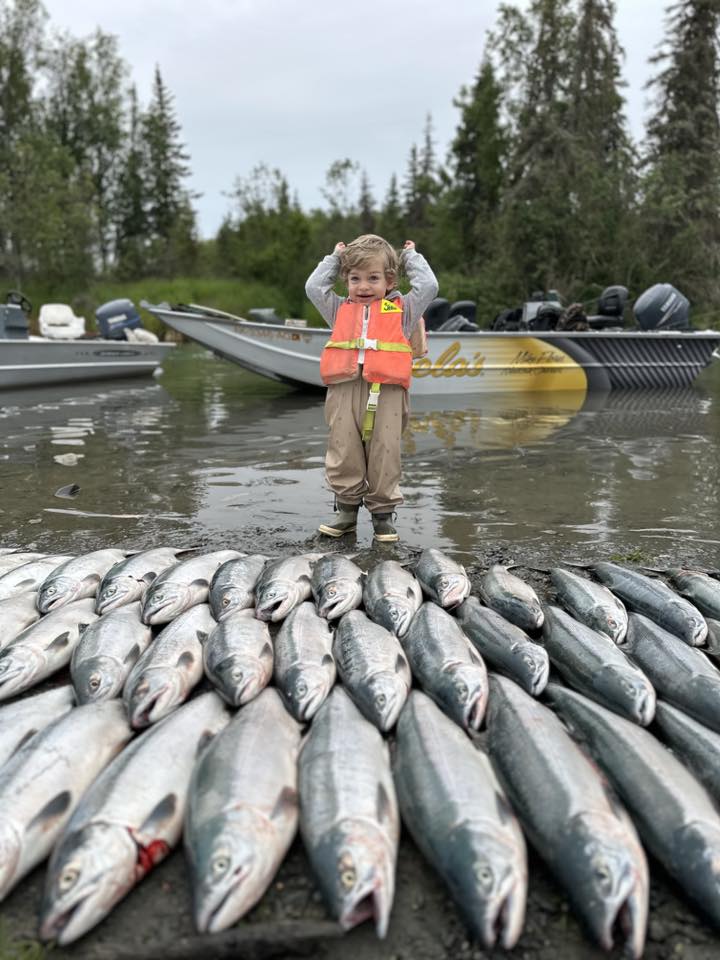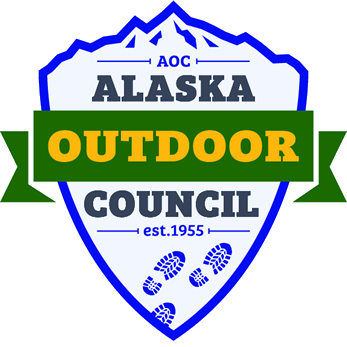
Salmon allocation in Alaska
Rod Arno, Public Policy Director
Alaska Outdoor Council
Who does salmon in Alaskan waters belong and who decides how
many you can harvest?
That question has driven politics in Alaska since banning fish traps was on the
ballot the same time as voting for Statehood back in 1956. State politicians were
tired of getting trumped by the U.S. Congress regarding regulating mining and
fishing in the Territory of Alaska. At the time Alaskan politicians figured achieving
statehood would give them a strong voice in developing Alaska’s salmon
resources. The ban on fish traps passed 21,285 to 4,004, Alaskans wanted to
manage and allocate its own fish.
These same politically active Alaskans back in the 50’s made sure that fish were
reserved to the people for common use. Plan and simple, Alaska State Constitution
Article 8, Section 3. Common use. They didn’t stop there, Section 15 of Article 8
of the Constitution spelled it out – No Exclusive Right of Fishery.
Art. 8, Sec 2 of the Alaska State Constitution makes it clear – the Alaska
Legislature is responsible for utilizing, developing , and conservation of all natural
resources belonging to the state. The 1st Ak Legislature (1959/1960) wasted no
time passing the task of allocating renewable fish and game resources off to a
citizen board. The Alaska Board of Fish and Game (Board) was created in state
statute to make allocation decisions in the best interest of Alaska. In no time the
Board failed miserably at allocating salmon to an unlimited number of individuals
choosing to fish commercially in state waters. Alaska’s voters got it, in 1972 they
voted to amend the Alaska State Constitution Art. 8, Sec.15 to limit entry into the
commercial fisheries industry. Concerns for fish conservation as well as the
stability of the aquaculture industry lead to limits on how many folks could harvest
fish in Alaska to sell. The Ak. Legislature quickly passed the responsibility of
handing out fish permits to the Commercial Fisheries Entry Commission to
administer the program and manage the allocation of permit.
By 1975 it became apparent that one board could not regulate both a commercial
fishery and game. The Alaska Board of Fisheries (BOF) was created to allocate
fish harvest among all the users in state waters, plus a whole bunch of other
authorities related to fish.
The BOF has plenty of rules the AK. Legislature has passed into law to direct
members on how they vote to allocate fish harvest among all harvesters in state
waters. The BOF members have a list, AS 16.05.251(e), of how they are to
determine who gets an allocate of fish harvest. Again, state law makes it clear the
BOF can only consider using the allocation criteria in AS 16.05.251(e) after
subsistence use (AS 16.05.258) has been met.
Starting in 1978 the AK Legislature passed its first subsistence use statute giving a
priority for Alaskans to fish, and game, during times of scarcity of the resource.
The statute was clearly a deviation from the Common Use clause, AK Constitution
Art. 8, sec 3. Pressure from Congress regarding pending legislation, Alaska
National Interest lands Conservation Act, ANILCA (1980), to provide an Alaska
Native preference to hunt and fish on federal lands and waters spurred the AK
Legislature to create a new class of harvesters, subsistence use. Subsistence use
has priority to fish, and game.
The BOF allocates harvest among all: personal use, sport, guided sport, and
commercial fisheries. Not subsistence use. The BOF only allocates fish harvest
among subsistence users when there isn’t enough fish for all subsistence users, AS
16.05.258(4). During times of scarcity of fish available for harvest under the state
subsistence law only subsistence use is allowed.
If you are a fish harvester in state waters under regulations for: personal use, sport,
guided sport, or commercial fisheries it’s up to you to let the AK BOF know what
fish you want to harvest and how many you would like. If you are a subsistence
use fish gather you are counting on the Alaska Division of Subsistence to let the
BOF know what the amount of fish is necessary for your subsistence use in state
waters.
So that leads to the question is the current BOF and ADF&G Subsistence Division
doing their job, consistent with state law, regarding assuring all subsistence users
have adequate opportunity to gather fish? By a vote of 22 yeas and 17nays the 1st
Session of the 34th AK House of Representatives voted this spring to require
dedicated seats on the BOF because subsistence users are not getting their amount
of fish necessary for subsistence. House Bill 125 if signed into law would dedicate
2 of the 7 seats on the AK BOF to subsistence use representatives. HB 125 will be
heard in the AK Senate during the 2nd Session of the 34th AK Legislature in 2026.
It’s hard to imagine how a Board that’s allocating between Personal use, sport,
guided sport and commercial fisheries will function with two seats going to
subsistence users who aren’t even in the mix. Subsistence use fish gathers are the
highest priority for allocation in law, AS 16.05.258. By current state law all other
fisheries are to be closed when subsistence users are not getting the amount
necessary for subsistence use.
So to answer who does Alaska salmon belong – it’s nobody. Commercial interests
will tell you salmon are a common property, open to all. Alaska has plenty
examples where that is not the case. State Courts are still addressing how for
common use goes.
The second half of the question I posed was who decides how many fish you get.
It’s you, you either go tell (Or join up with an NGO that goes to BOF meetings to
advocate for your share of fish) the AK BOF (or for federally qualified subsistence
users it would be the FSB) how many fish you want and when you want to harvest
them and hope for the best. Knowing that salmon are regularly fully allocated by
the BOF already.
The Alaska Outdoor Council (AOC) supports state management of fish and game.
AOC does not support Dual (dueling) management with the Feds. The main drive
for statehood was gaining authority for managing fish harvest along Alaska’s coast.
Fisheries and mining regulations were being made in Wash. D.C. under the
watchful guidance of their lobbyist prior to statehood. The Alaska Board of
Fisheries has a 50 year history of evolving to meet the desires of those who show
up to participate in the regulatory process. There appears to be plenty of room for
improvement on the BOF, the Ak Legislature and governor have plenty of say on
any statutory changes to management and allocation of fish in state waters.
Now add allocation of salmon harvest regulated by the Federal Subsistence Board
(FSB) in federal waters to the mix. While only 17% of Alaskans are eligible to
participate in federal subsistence fisheries it does add to the overall harvest of
salmon in Alaska. With the passage of ANILCA in 1980 all the non-navigable
waters (and 60% of lands) in Alaska are under the authority of FSB to adopt their
own fishing (and hunting) regulations. To qualify to fish under federal regulations
you just have the right rural zip code, That excludes 83% of Alaskans who live in
urban areas, according to the feds.
Title VIII Subsistence Management and Use of ANILCA has given the Feds an
opportunity to actively usurped state fisheries management and allocation. The
efforts of the drive for Alaska statehood to gain management authority over
Alaska’s fisheries from the Feds is being undone. AOC actively resists the federal
encroachment into Alaska’s fish management and allocation in the political arena
for the benefit of all Alaskans.
AOC sees no reason why the state of Alaska can not provide fish for all Alaskans
for whom gathering and consuming fish is part of their livelihood, regardless of
what their ZIP Code is. The small percentage of Alaskan who choose to gather
their own wildfood harvest should have that opportunity – after conservation and
subsistence needs are being taken care of.
Should you agree add your name to AOC’s membership roster.
